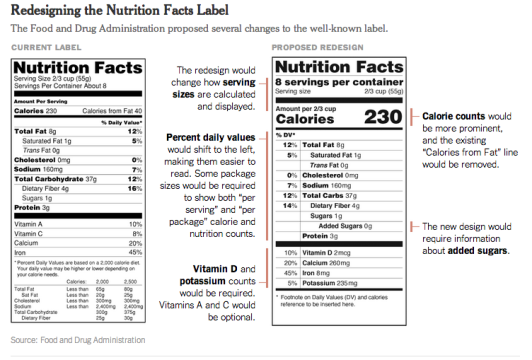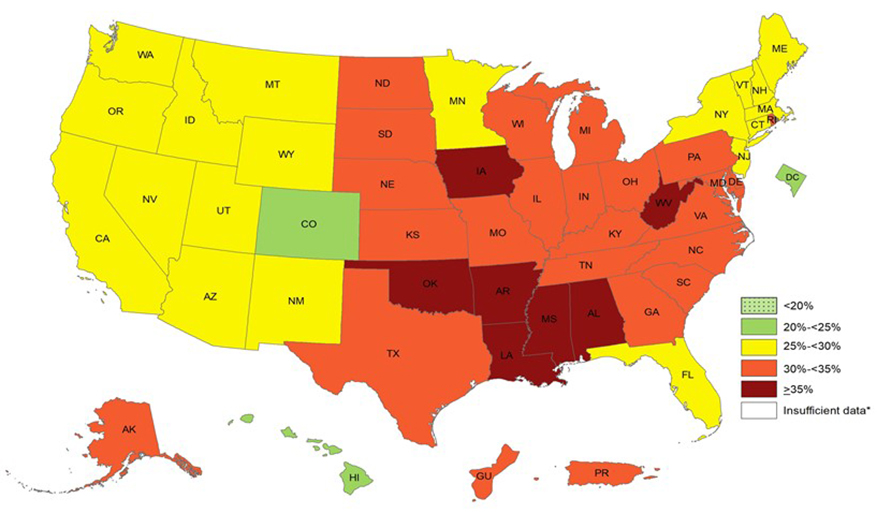Georgia’s obesity rate for adults is about average among states, the CDC reports. But it’s still a startlingly high figure.
Almost one in three residents in the state is obese. The overall 31.6 percent rate for 2017 in Georgia is slightly higher than the 30.5 percentage in 2014. It’s a rate that has climbed steadily, both here and nationally.

And African-Americans in Georgia have an even higher rate of obesity, a situation that also prevails at the national level.
The CDC report, released last week, also found that the South (32.4%) and the Midwest (32.3%) had the highest prevalence of obesity, followed by the Northeast (27.7%), and the West (26.1%). The national average rate is 30.1%.
Some other Southern states fared worse than Georgia, which has the 24th highest rate of obesity.
In 2017, seven states reported an adult obesity prevalence at or above 35 percent: Alabama, Arkansas, Iowa, Louisiana, Mississippi, Oklahoma, and West Virginia. Five years ago, all states had obesity prevalence lower than 35 percent, the CDC reported.
“The trend has been going on for years,’’ said Christian Lemmon, a clinical psychologist at the Medical College of Georgia at Augusta University who’s an expert in eating disorders and bariatric surgery assessments. “It’s very alarming and concerning.”
The data come from the Behavioral Risk Factor Surveillance System, a state-based, telephone interview survey conducted by CDC and state health departments. Height and weight data are self-reported.

The general increases come despite more attention on the problem. Nutrition labels have become commonplace, schools are serving healthier food, and some communities are developing more parks and greenspace. In addition, consumption of sugar-sweetened beverages has been reduced.
Still, several factors are driving the increases in obesity rates, Lemmon said. Included are education gaps, lower socioeconomic status and health disparities. In addition, there are genetic and biological influences on children from obese parents, as well as behavioral influences.

Some neighborhoods lack grocery stores, so low-income families often buy foods that are inexpensive but unhealthy.
More sedentary lifestyles, constant television and computer use, can reduce exercise, Lemmon noted. “African-American kids are more adversely affected by these factors and barriers,’’ he added.
Adults with obesity have an increased risk for many serious health conditions such as heart disease, stroke, type 2 diabetes, and some cancers. Children with obesity are more likely to become adults with obesity. Obesity costs the United States health care system over $147 billion a year.
Obesity prevalence last year ranged from a low of 22.6 percent in Colorado to a high of 38.1 percent in West Virginia.
Nationally, adults without a high school degree had the highest prevalence of obesity, at 35.6 percent, followed by high school graduates (32.9 percent), and adults with some college (31.9 percent). College graduates had the lowest prevalence of obesity (22.7 percent).

Including Georgia, 31 states had obesity rates of 35 percent or higher among non-Hispanic black adults, the report said.
Adults with a “body mass index” of 25 to 29.9 are considered overweight, while individuals with a BMI of 30 or more are considered obese.
Obesity costs the United States health care system over $147 billion a year.
“For years, the emphasis [on obesity] has always been on intervening in adulthood,’’ Lemmon said. “Now the emphasis is on intervening in children.’’
The CDC said lawmakers, employers, government agencies, health care providers, and individuals all have important role in preventing or managing obesity.

